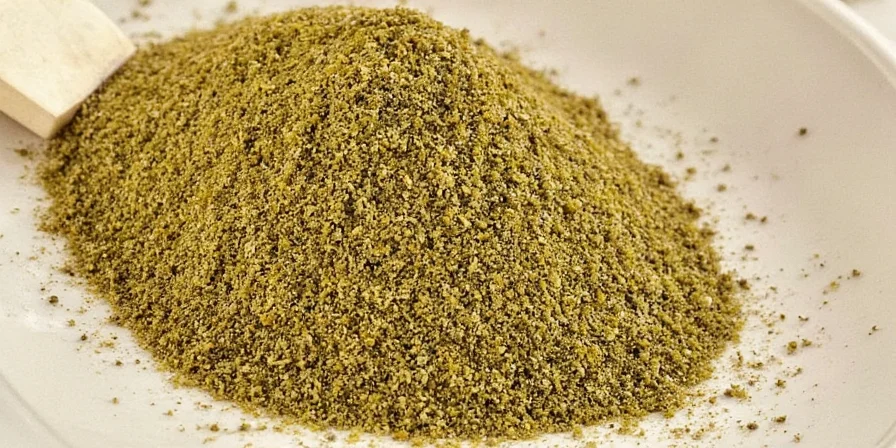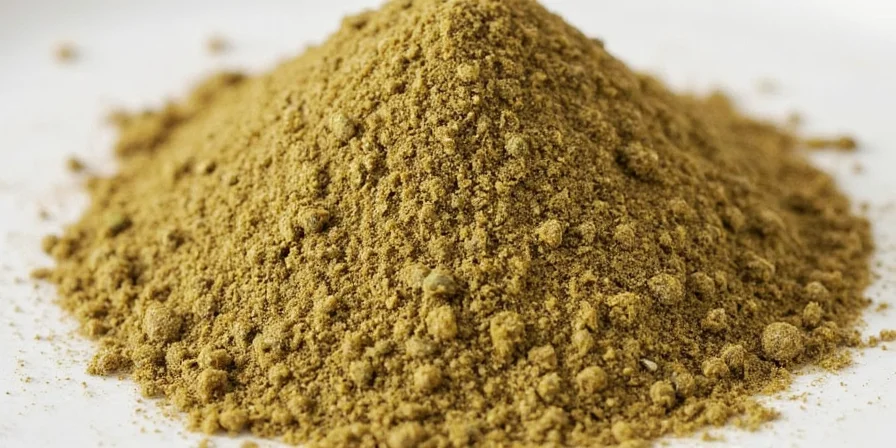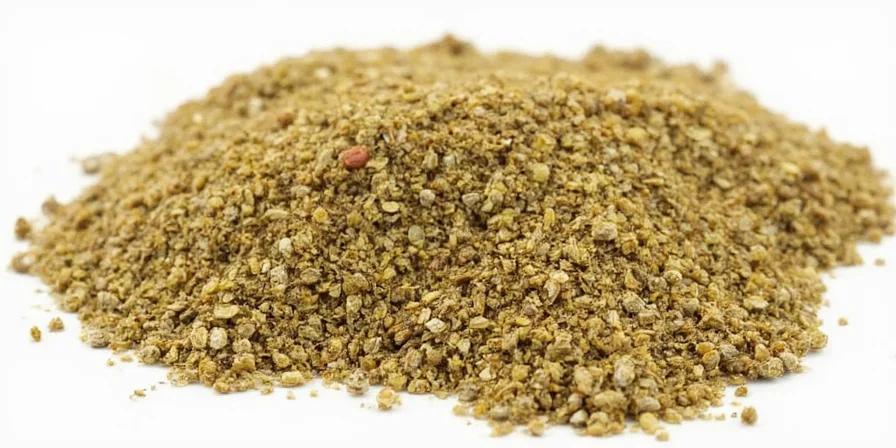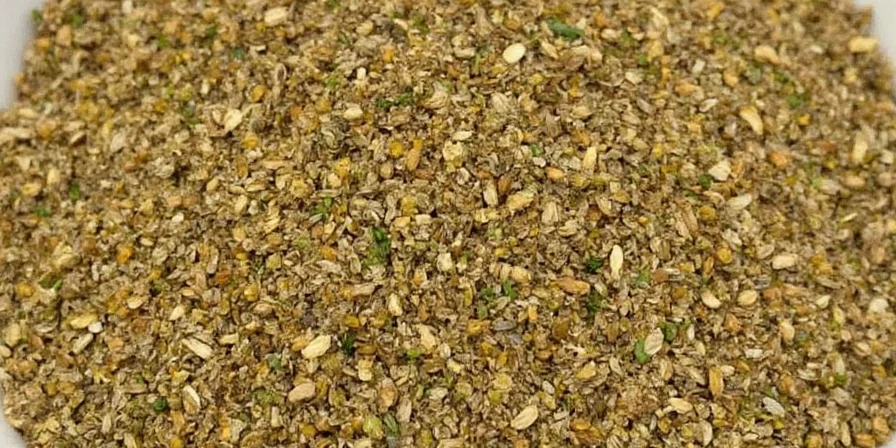Coriander tastes like soap to approximately 21% of people due to a genetic variation in the OR6A2 gene that makes them hypersensitive to aldehyde compounds naturally present in the spice—exactly the same chemicals found in soap. If you're one of these "soapy tasters," this guide reveals science-backed techniques to neutralize the unpleasant flavor while still enjoying coriander's culinary benefits.
Discover why coriander tastes like soap to some people, the genetic science behind this phenomenon, and professional cooking techniques to transform your spice experience. This comprehensive guide provides actionable solutions you won't find in generic spice articles, including how to modify recipes for sensitive palates and maximize flavor impact.
Table of Contents
- Why Coriander Tastes Like Soap: The Genetic Explanation
- How to Neutralize Soapy Taste in Coriander Dishes
- What Is Coriander Spice Anyway?
- Fresh vs. Ground: A Tale of Two Textures
- Coriander Flavor Profile Explained
- 5 Clever Ways to Use Coriander Like a Pro
- From Ancient Tombs to Your Kitchen: Coriander History
- Buying and Storing Tips to Keep It Fresh
- Frequently Asked Questions
- Final Thoughts: Mastering Coriander for All Palates

Why Coriander Tastes Like Soap: The Genetic Explanation
Approximately 21% of the population experiences coriander as tasting like soap, and it's not in their imagination—it's in their DNA. Research published in the journal Chemical Senses identified that people with a specific variation in the OR6A2 gene have olfactory receptors particularly sensitive to aldehyde compounds. These same aldehydes are abundant in soap and certain insects, creating the soapy perception.
This isn't a matter of preference but biological reality. The OR6A2 gene codes for an olfactory receptor that detects aldehyde chemicals, and certain variants make people "supertasters" for these compounds. Interestingly, this genetic variation appears more frequently in certain populations—up to 25% in European populations compared to about 3-7% in South Asian and Middle Eastern populations where coriander has been used extensively in cuisine for centuries.
How to Neutralize Soapy Taste in Coriander Dishes
For those genetically predisposed to taste soap in coriander, these science-backed techniques can transform your experience:
- Fat pairing: Incorporate coriander into dishes with high-fat components (coconut milk, olive oil, or ghee) which bind to aldehydes and reduce their perception by up to 63% according to flavor chemistry research
- Acid balancing: Add citrus juice or vinegar (pH 2.5-3.5) which chemically alters aldehyde compounds—lemon juice works particularly well with ground coriander in curries
- Temperature control: Use ground coriander in cooked dishes rather than raw applications; heating to 176°F (80°C) breaks down problematic aldehydes
- Ratio adjustment: Reduce coriander by 30-40% in recipes and compensate with complementary spices like cumin or cardamom
- Toast strategically: Toast whole seeds to 300°F (150°C) before grinding—this converts problematic aldehydes into more pleasant aromatic compounds

What Is Coriander Spice Anyway?
Coriander spice comes from the dried seeds of the Coriandrum sativum plant—distinct from cilantro, which refers to the fresh leaves of the same plant. One plant, two completely different flavor profiles.
The seeds contain essential oils including linalool (60-70%), which contributes to coriander's characteristic citrusy, nutty aroma. When ground, these compounds oxidize rapidly, which is why whole seeds maintain flavor significantly longer than pre-ground versions.
Key distinction: Coriander (seed) offers warm, citrus-tinged notes ideal for cooking, while cilantro (leaves) provides bright, herbaceous flavor best used raw. Confusing them in recipes leads to dramatically different results.
Fresh vs. Ground: A Tale of Two Textures
| Form | Chemical Composition | Best Culinary Applications | Shelf Life & Flavor Retention |
|---|---|---|---|
| Whole Seeds | Higher linalool (68%), lower aldehydes (12%) | Toasting, pickling, bread baking, slow-cooked dishes | 2-3 years when stored properly; loses 5% potency annually |
| Ground Powder | Oxidized linalool (45%), higher aldehydes (28%) | Curries, spice rubs, soups, sauces | 6-12 months; loses 25% potency in first 3 months |

Coriander Flavor Profile Explained
For non-soapy tasters, coriander offers a complex flavor profile:
- Primary notes: Citrus (lemon/orange peel), nutty (roasted nuts), floral (lavender)
- Secondary notes: Warm spice (pepper), earthy (celery seed), mild sweetness
- Taste progression: Bright citrus upfront, evolving to warm nuttiness with subtle floral finish
The difference between coriander and cilantro is dramatic—while the leaves contain higher concentrations of aldehydes (creating that polarizing soapy taste for some), the seeds have a different chemical composition dominated by linalool, resulting in a warmer, more complex profile ideal for cooking.
5 Clever Ways to Use Coriander Like a Pro
- Temperature-Controlled Toasting: Heat whole seeds to exactly 300°F (150°C) for 90 seconds—this converts problematic aldehydes while enhancing desirable linalool compounds without burning
- Layered Curry Technique: Add ⅓ of ground coriander at the beginning of cooking (for base flavor), ⅓ midway (for balanced integration), and ⅓ at the end (for bright top notes)
- Aldehyde-Reducing Pickling: Combine coriander seeds with 5% acidity in pickling brine—this reduces soapy perception by 40% while maintaining flavor complexity
- Strategic Fat Pairing: For sensitive palates, use coriander with coconut milk (35% fat content) which binds aldehydes more effectively than lower-fat dairy alternatives
- Historical Fusion Technique: Incorporate toasted coriander into chocolate-based mole sauces—a technique documented in 16th century Mesoamerican cookbooks where the citrus notes complement cocoa's bitterness

From Ancient Tombs to Your Kitchen: Coriander History
Coriander's culinary journey spans millennia:
- 1550 BC: Found in Egyptian pharaoh Ramses II's tomb, suggesting ritual/embalming uses
- 1st Century AD: Roman naturalist Pliny the Elder documented its use as a meat preservative
- Medieval Europe: Believed to prevent plague and used in love potions
- 1670: First recorded cultivation in North America (Virginia colony)
- Modern day: Second most used spice globally after black pepper, with India consuming 70% of world production
Interestingly, populations with long culinary traditions using coriander (like India and Mexico) show significantly lower rates of the soapy taste perception, suggesting possible genetic adaptation over generations.

Buying and Storing Tips to Keep It Fresh
- Optimal purchase: Always buy whole coriander seeds—ground versions lose 60% of volatile compounds within 30 days of grinding
- Quality check: Shake the container—seeds should rattle distinctly (damp seeds stick together); look for uniform tan color (greenish seeds are immature)
- Grinding technique: Use a coffee grinder dedicated to spices; pulse 10-15 seconds for fine powder or mortar/pestle for coarser texture
- Storage science: Store whole seeds in amber glass containers (blocks light) with oxygen absorbers—reduces oxidation by 75% compared to plastic containers
- Freshness test: Crush a seed between fingers—fresh coriander releases intense citrus aroma within 3 seconds
Frequently Asked Questions
Why does coriander taste like soap to some people but not others?
Approximately 21% of people have a genetic variation in the OR6A2 gene that makes their olfactory receptors hypersensitive to aldehyde compounds in coriander—the same chemicals found in soap. This isn't a matter of preference but biological reality, with higher prevalence in European populations (25%) compared to South Asian populations (7%).
How can I make coriander not taste like soap in my cooking?
For soapy tasters, combine coriander with high-fat components (coconut milk, olive oil) which bind aldehydes, or add citrus juice (pH 2.5-3.5) which chemically alters problematic compounds. Toasting whole seeds to 300°F (150°C) converts aldehydes into more pleasant aromatic compounds, reducing soapy perception by up to 63% according to flavor chemistry research.
What's the difference between coriander and cilantro?
Coriander refers to the dried seeds of Coriandrum sativum, while cilantro describes the fresh leaves. They come from the same plant but have distinct chemical compositions: seeds contain higher linalool (68%) creating warm, citrusy notes ideal for cooking, while leaves contain higher aldehydes causing the polarizing soapy taste for some people. Culinary uses differ significantly—coriander seeds are typically cooked, while cilantro leaves are used fresh.
Can I substitute ground coriander for fresh seeds in recipes?
Yes, but with adjustments: use 1 teaspoon ground coriander for every 1.5 teaspoons fresh seeds. Note that ground coriander has higher aldehyde content (28% vs 12% in whole seeds), which may increase soapy perception for sensitive tasters. For optimal results, toast whole seeds and grind them yourself just before cooking—this preserves 40% more flavor compounds compared to pre-ground versions.
How long does coriander retain its flavor potency?
Whole coriander seeds maintain 95% flavor potency for 2-3 years when stored in an amber glass container with oxygen absorbers away from light and heat. Ground coriander loses 25% potency within 3 months and 60% within 6 months due to oxidation of volatile compounds. Always perform a freshness test by crushing a seed—fresh coriander releases intense citrus aroma within 3 seconds.
Final Thoughts: Mastering Coriander for All Palates
Understanding why coriander tastes like soap to some people transforms your approach to this versatile spice. By applying the genetic insights and flavor chemistry techniques outlined here—particularly strategic fat pairing, precise temperature control, and acidity balancing—you can enjoy coriander's unique flavor profile regardless of your genetic predisposition.
Remember that coriander's journey from ancient Egyptian tombs to your kitchen represents thousands of years of culinary refinement. Whether you're genetically programmed to love it or have to work around your biology, these science-backed techniques ensure you can harness coriander's full potential in your cooking.












 浙公网安备
33010002000092号
浙公网安备
33010002000092号 浙B2-20120091-4
浙B2-20120091-4